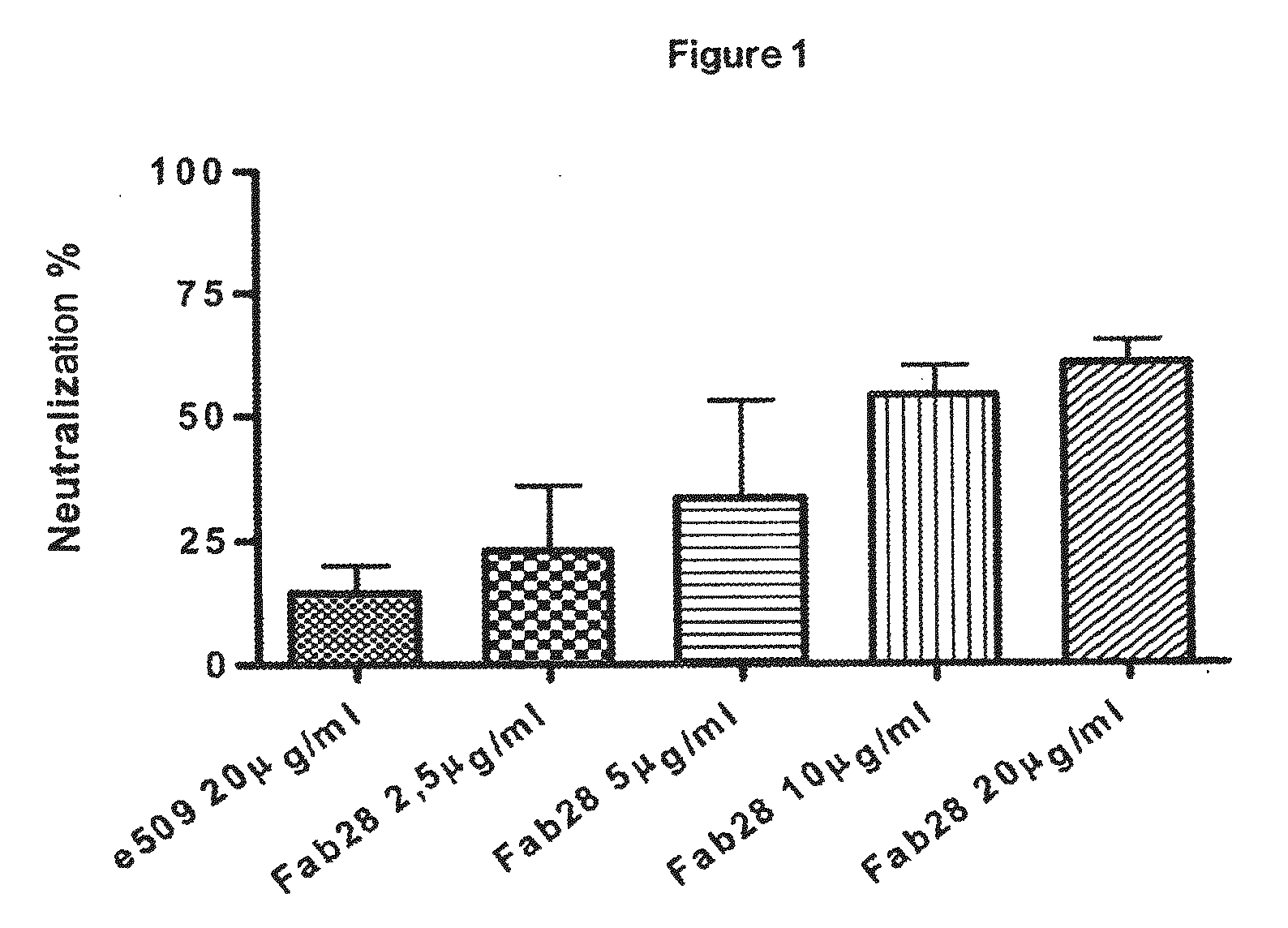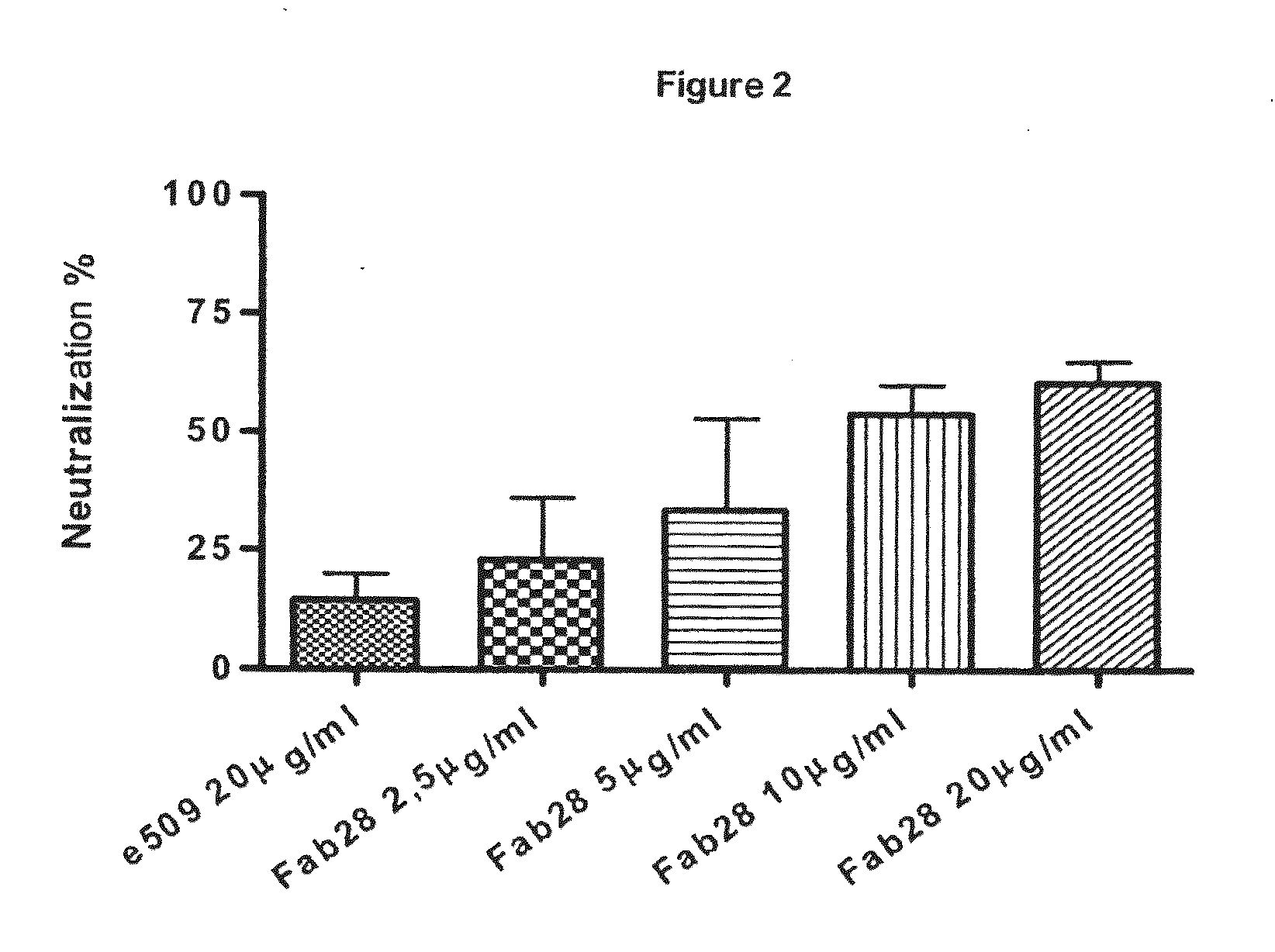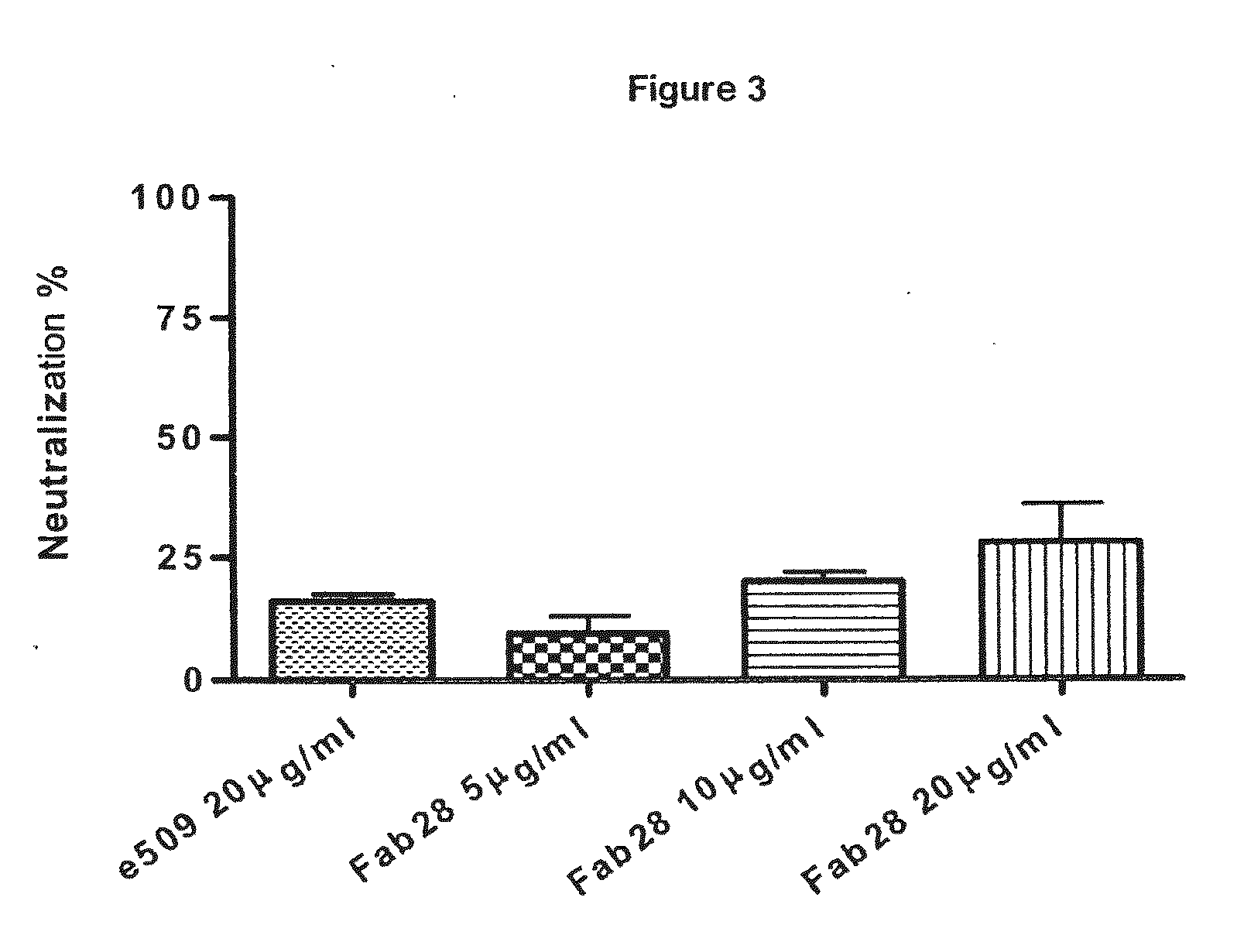Monoclonal antibodies capable of reacting with a plurality of influenza virus a subtypes
a technology of monoclonal antibodies and influenza viruses, applied in the field of monoclonal antibodies capable of reacting with a plurality of influenza virus a subtypes, can solve the problems of not always turning out to be correct, not at all negligible risk, morbidity and mortality, etc., and achieve the effect of effective prevention
- Summary
- Abstract
- Description
- Claims
- Application Information
AI Technical Summary
Benefits of technology
Problems solved by technology
Method used
Image
Examples
Embodiment Construction
[0024]The present inventors have surprisingly succeeded in providing monoclonal antibodies with the above-mentioned desirable features.
[0025]Thus, a first object of the present invention is a monoclonal antibody directed against the hemagglutinin antigen of the influenza A virus, characterized by being able to bind multiple subtypes of the influenza A virus.
[0026]A second object of the present invention is a monoclonal antibody directed against the influenza A virus, characterized by having a neutralizing activity towards multiple subtypes of the influenza A virus. Preferably, such a neutralizing monoclonal antibody recognizes influenza A virus hemagglutinin (HA) as the antigen.
[0027]The monoclonal antibodies of the invention are preferably human or humanized antibodies.
[0028]The attainment of human monoclonal antibodies according to the invention and their binding properties are described in detail in the experimental section that follows.
[0029]The preparation of humanized antibodi...
PUM
| Property | Measurement | Unit |
|---|---|---|
| pH | aaaaa | aaaaa |
| pH | aaaaa | aaaaa |
| Voltage | aaaaa | aaaaa |
Abstract
Description
Claims
Application Information
 Login to View More
Login to View More - R&D
- Intellectual Property
- Life Sciences
- Materials
- Tech Scout
- Unparalleled Data Quality
- Higher Quality Content
- 60% Fewer Hallucinations
Browse by: Latest US Patents, China's latest patents, Technical Efficacy Thesaurus, Application Domain, Technology Topic, Popular Technical Reports.
© 2025 PatSnap. All rights reserved.Legal|Privacy policy|Modern Slavery Act Transparency Statement|Sitemap|About US| Contact US: help@patsnap.com



